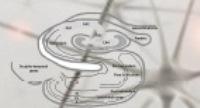Neural Mechanisms of Place Attachment

This research examines three neurophysiological mechanisms that impact place attachment processes: movement generated place cell firing, spatial learning, and route replay. Place attachment theory examines people’s relationships with space and is used by social scientists, architects, urban planners, and geographers. In its most basic understanding, attachment is developed through experience, stored in long-term memory, and then retrieved for comparison purposes for learning new experiences. If a clear connection can be established between cognitive mapping and place attachment then the neural mechanisms that are active in cognitive mapping can inform placemaking, design choices, and future research.
(Conference Poster)


Add comment
Log in to post comments